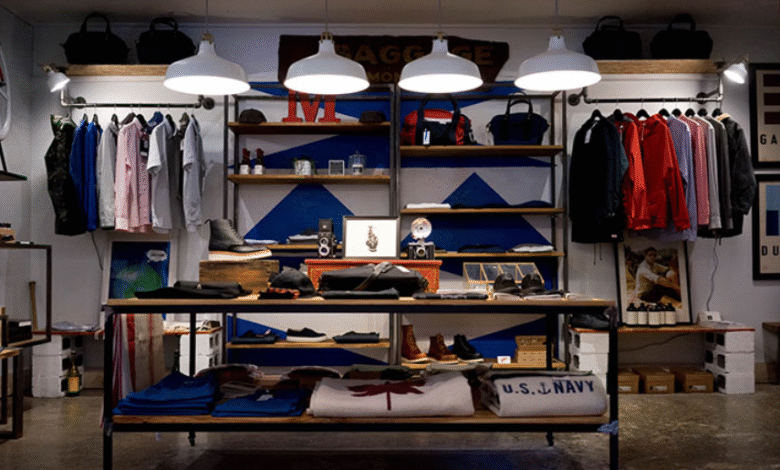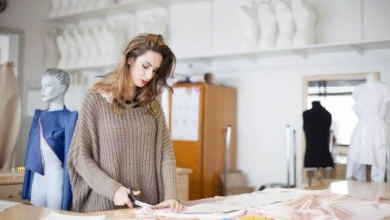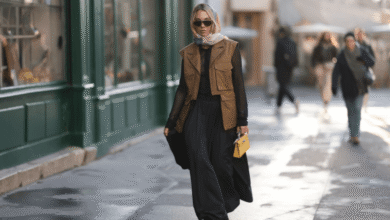How to Design Displays That Boost Retail Sales

Retail success is no longer just about having the best products — it’s about how you present them. In a fast-paced, image-driven world, presentation matters more than ever. From high-end malls to niche cosmetics boutiques, visual merchandising has become a silent seller. Creative displays, compelling signage, and bespoke fixtures are helping brands stand out and drive more in-store engagement. For example, if you’re looking to enhance in-store aesthetics and draw more foot traffic, exploring clever Cosmetics retail display ideas can be the first step toward elevating your customer experience.
In this article, we’ll look at how well-designed retail displays — including LED signage and customized fixtures — play a key role in shaping customer perception, increasing sales, and building brand loyalty.
Why Retail Display Design Matters More Than Ever
Shoppers today are bombarded with choices. They enter stores not just to browse but to experience. That’s where display design comes in. A well-structured retail display serves multiple functions:
- Attract attention: Strategic lighting and signage draw people from outside into the store.
- Guide movement: Displays can influence customer flow and keep them browsing longer.
- Tell a story: Creative displays support branding by evoking emotions and showcasing lifestyle value.
- Highlight promotions: Temporary setups can spotlight offers, bundles, or seasonal products.
Retailers that invest in display design often report higher dwell times, better conversion rates, and stronger customer engagement.
See also: Why Flat Bottom Bags Are the Future of Sustainable Packaging
The Power of LED Signage in Retail
LED signage has rapidly become a staple in modern retail design — and for good reason.
1. High Visibility, Low Power
LED lights offer bright, eye-catching visuals that are hard to ignore, especially in crowded retail environments. They’re also energy-efficient, making them an ideal long-term solution for stores that want maximum visibility with minimal environmental impact.
2. Dynamic Messaging
Unlike static signage, LED displays can cycle through varied messages, showcasing promotions, new arrivals, or branded content. This versatility helps retailers stay current without constantly printing new materials.
3. Enhanced Brand Perception
Customers associate high-tech displays with professionalism and quality. LED signage lends a modern, polished look to stores — making even small brands feel premium.
4. Targeted Communication
Digital signage allows for real-time updates. A cosmetics store, for example, can change its digital screens daily to reflect product highlights, influencer testimonials, or flash deals.
Innovative Display Design Strategies That Work
Retail display design should feel both creative and purposeful. Here are some of the most effective strategies:
1. The Rule of Three
Grouping products in threes creates visual balance and makes displays feel less cluttered. Use this principle to combine complementary items — like a lipstick, liner, and remover — in a single showcase.
2. Storytelling Displays
People don’t just buy products — they buy lifestyles. Build scenes or “mini-environments” to place your product in context. A makeup brand might create a “glam night out” setup, complete with vanity lights, brushes, and sparkles.
3. Vertical Space Optimization
Don’t just think horizontally. Wall-mounted displays, hanging shelves, and floor-to-ceiling graphics help use every inch of space, especially in small boutiques.
4. Interactive Zones
Consider adding digital screens, QR codes, or touch-enabled mirrors that allow customers to engage with the display. Interactivity increases dwell time and gives customers more information at their fingertips.
Bespoke Fixtures: The Silent Ambassadors of Your Brand
Standard shelving and fixtures can serve a basic function — but bespoke fixtures elevate the entire shopping experience. They’re custom-made to reflect your brand identity and product needs.
Why Custom Fixtures Make a Difference:
- Tailored fit: Bespoke fixtures are designed for your space and product dimensions, maximizing usability.
- Stronger brand expression: Custom materials, finishes, and shapes help communicate brand values.
- Higher perceived value: Customers tend to perceive products displayed in premium setups as more valuable, even if the price remains the same.
For instance, a luxury skincare brand might use frosted glass shelves, gold-accented stands, and minimalistic lighting to suggest elegance and trust.
Real-World Examples: How Top Retailers Use Display Design
Let’s take a look at how brands are putting these ideas into action:
Sephora
Their stores feature modular displays with strong LED lighting and clearly labeled product categories. Interactive zones let shoppers try products virtually or through testers.
Lush Cosmetics
Famous for handmade soaps and skincare, Lush uses wooden crates, chalkboard signage, and open layouts to communicate its eco-friendly, natural brand identity.
Glossier
Glossier blends showroom aesthetics with clean, futuristic fixtures. Soft lighting and mirrored surfaces create a perfect environment for selfies — encouraging user-generated content and organic marketing.
Tips for Designing an Effective Cosmetics Display
Cosmetics products need to shine — both literally and figuratively. Use these tips to enhance their appeal:
- Use contrast lighting to highlight shimmer and color richness.
- Display testers in an organized, hygienic layout.
- Incorporate mirror zones where customers can test products easily.
- Use transparent risers to elevate smaller items like lip balms or travel kits.
- Keep the display clean and well-stocked — nothing turns off a customer like a half-empty or dusty display.
How Display Design Shapes Customer Behavior
Every detail — from shelf height to lighting temperature — affects how customers think and act in-store.
- First impressions matter: People form opinions within seconds of entering a store.
- Path to purchase: Well-placed displays guide the customer toward premium or higher-margin products.
- Impulse buying: Attractive end caps or checkout displays can lead to spontaneous purchases.
- Return visits: Memorable visual experiences encourage repeat foot traffic and social sharing.
Sustainability in Display Design
Modern consumers — especially younger generations — care about eco-friendly practices. Sustainable display design can reduce waste while enhancing brand image.
How to Be Greener:
- Use recycled or recyclable materials in your fixtures.
- Opt for modular designs that can be reused for different campaigns.
- Invest in LED lights, which last longer and use less energy.
- Partner with vendors that prioritize low-impact production processes.
Final Thoughts: Why You Should Invest in Your Retail Displays
The in-store experience is a powerful tool for driving brand loyalty and increasing sales. Investing in better displays — whether through dynamic LED signage, thoughtful layout design, or bespoke fixtures — is no longer optional. It’s a competitive necessity.
If you’re ready to elevate your retail space and inspire customer confidence, check out these smart and visually compelling Cosmetics retail display ideas at litsignage.com — a great starting point for transforming ordinary setups into immersive brand experiences.



